Kate Pociask
Creative Director
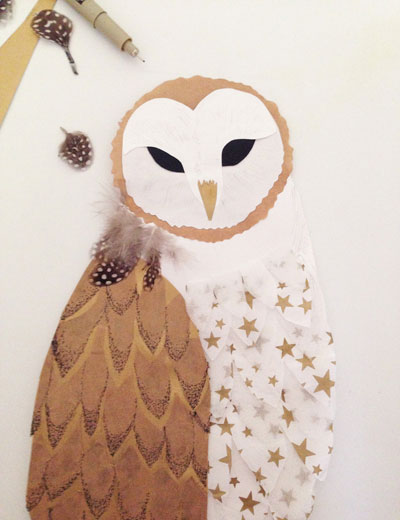
I sharpen my hand-skills by making gifts for people. This is the start of a birthday present for my nephew,
who is fascinated by owls but scared of the noises they make.
Primary design concentration:
Brand Rehabilitation
Most preferred tools for designing:
Prismacolor chisel tip marker in indigo. It’s what I use to brainstorm.
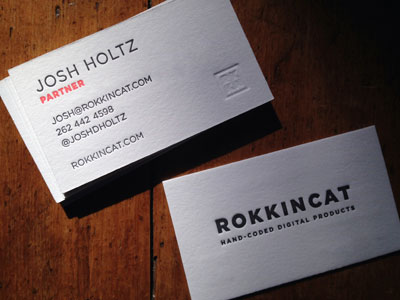
Letterpressed business cards for RokkinCat, a boutique development shop with minimalist sensibilities.
My roles: Brand Strategy, Design.
How and why did you choose to become a designer?
I studied art without much intention of making it a career. I thought I would make art in my spare time. When I graduated, I worked in marketing for Honda for about a year. One day, they asked me to give feedback on the look of a campaign to the graphic design team. I had a lot to say, and found I really enjoyed using that part of my brain. It was a great blend of elements of art and design, psychology and business. And I thought about how graphic design was close to art. So I went back to school to learn graphic design.
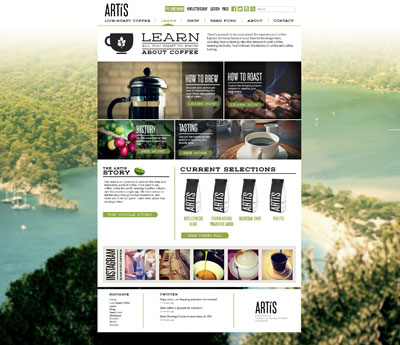
Web-landing page for Artís, a coffee roastery and café, in San Francisco, with a focus on live roasting
and education. My role: Creative Direction.
What are some of the challenges you encounter as a designer and how do you deal with them?
I battle hard against “imposter syndrome” on a daily basis. It’s worse when I’m in a slump in a project, or when I’m looking at someone else’s amazing work. That’s the trap though—I tell myself that I’m getting inspired, but it does the opposite of inspiring me. It derails me. I have to remind myself that comparisons are counterproductive. As to how to deal with it, the only way I’ve found to overcome this nihilistic paralysis is to remind myself how creativity is magic. I don’t mean that in a light way. I mean MAGIC! There was nothing, and then I made SOMETHING. And that’s not insignificant.
What is your definition of an “elegant solution,” that is, good design?
One that doesn’t demand anything of its users, and instead, surprises and delights.
From skills to values, what makes a designer successful?
Curiosity. And not from the safety of your googling machine. I mean about people. About strangers and your neighbors, and people you’ve known for years. Ask them questions. Observe. Listen. Listen to the things they say and the things they don’t. Don’t form any judgments. Ask questions about the world, as a whole, and about your neighborhood, and about why a thing is where it is. Ask questions of yourself. Don’t let yourself off with easy answers. Drawing your own self-portrait will always be hardest. As a creative, you have to be curious about what is, why that is, and what could be. And then be a good listener. The rest is just learned skills.
How do you stay motivated and grow personally and professionally as a designer?
You say yes to things that scare you. When the voice, in my head, that is small, starts to speak up “Umm…do you…know how to do that?” I answer, “No. You know as well as I do that we’ve never done that before!” The voice has well-meaning; it wants to save me from floundering around and looking like an idiot. But you have to ignore it for your own growth. Picasso said, “I am always doing things I can’t do. That’s how I get to do them.”
For those aspiring to become a designer, whatever the discipline, what is your advice?
Like anything worthwhile, it’s going to take a long time. I tell you that not to deter you, but rather, so you’re not surprised and discouraged. It takes years to learn, and a little longer to be good, and even longer to feel like you’re good. But we spend about 1/3 of our lives working, so you better well-like what you do. I love it. I hope you will too.
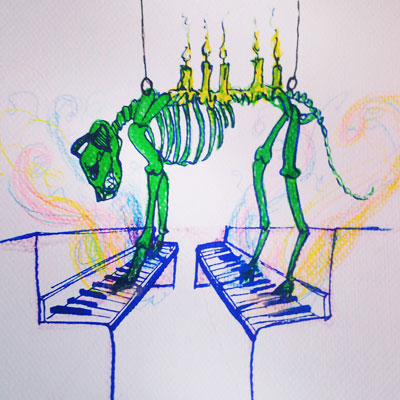
I keep a dream journal to give myself a reason to draw everyday. April 23rd—This dream was very Tim Burton-esque, about a skeleton-dog chandelier that played beautiful, haunting tunes for dinner-party guests.
What is your quest in design, from a professional practice, education or evolution standpoint?
My quest is about building up a vocabulary in all sensory languages, so as to be able to conduct them later in a great orchestra.
Previous: Chelsea Lee | Next: Sarah Schrauwen
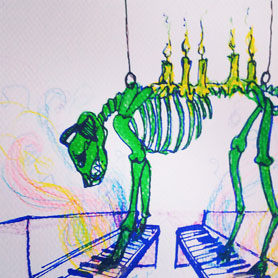
Support this solo initiative
What began as a collection of links has evolved into a comprehensive archive committed to creative culture—offering so far 395 interviews with under-the-radar Artists, Designers & Makers, in addition to 202 write-ups across events, books, movies, more. Free to explore. Free from ads. If you gain a level of motivation, knowledge, even delight, from Design Feast, please support on Patreon. Thanks for your consideration!
Wishing you continual success,
Nate Burgos, Content Creator & Publisher
Comments
There are no comments yet.
Leave Your Comment